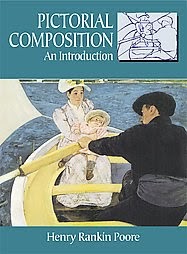A lot is made of visual paths. The general idea that you want the viewer to land on the area of emphasis/focal point, but you want their eye to take a journey through your image to be guided to the focal point. The classic paths I've seen in reading about it are identified as triangular, S or reverse S/serpentine, C or reverse C, U or upside down U, spiral, converging, L shaped, or paths formed by gradation.
What I'm wondering is can the eye really be guided in such a way, or is it much simpler, such as simply seeking the areas of greatest contrast? Or simply seeking things we are familiar with, like where's Waldo.
There are endless scenarios, options methods and most of them work.
The use of light and dark creates contrast = dimension.
Our brains generally see things in 3D or thirds, hence the rule of thirds.
The use of curves and triangle etc are powerful in an image, i use angles with model shoots, as well as the shape of the torso legs arms with elbows bent, the bending of an arm, angles are a powerful tool.
Some countries we read left to to right others right to left, top to bottom, etc etc
Our eye is only the extension of our brain.
As mentioned above we generally gravitate to the brightest part of the image be it by purpose of the author to attract the viewer to a point or trail, or a mistake and therefore its a distraction.
Usually we like to take the journey from a foreground being the anchor for the image then move to a mid frame subject of interest and finally the horizon area, again generally but not always in thirds. if we can build in a s bend the better.
Having a image look natural is welcoming, if its needle sharp from your toes to the branches on the trees 5 kilometers away and everywhere in between looks great to some, clinical and unrealistic to others and often doesn't lead or guide the viewer in cases.
Leading lines are important and work well if available and you capitalize on using them.
Composition is the single most powerful tool that can even overrule super sharpness and some other technical aspects of an image.
FWIW Only an opinion
Some samples of snaps taken by my girlfriend, mostly out of camera as JPEG
1st and 3rd image with the Canon G10 compact = right to left, then left to right with leading lines and triangles
Second is the D3X with 35mm D F2 (highly underrated lens) foreground mid ground horizon, the event was Christmas day how most of us spend it in OZ.
4th image is 24-70 2.8 G and D3X, right hand lower corner, to foreground cascading water, then to leading line of wave to bridge, crossing the sunrise in the distance.
I mean you could edit your heart out with the images but the examples are there.
1st image, do the black rocks add or distract, is it a case where the solid dark point of the rocks on the lower right attracts the eye then leads from the taller to the shorter person all at an angle and another leading line, then with the Tyre tracks at an angle left to right directing the eye to the walkers etc makes another triangle. The girl on the foreshore with her back towards the people directs the viewer even further and makes you wonder what she is looking at.
You can only see EXIF info for this image if you are logged in.
You can only see EXIF info for this image if you are logged in.
You can only see EXIF info for this image if you are logged in.
You can only see EXIF info for this image if you are logged in.


